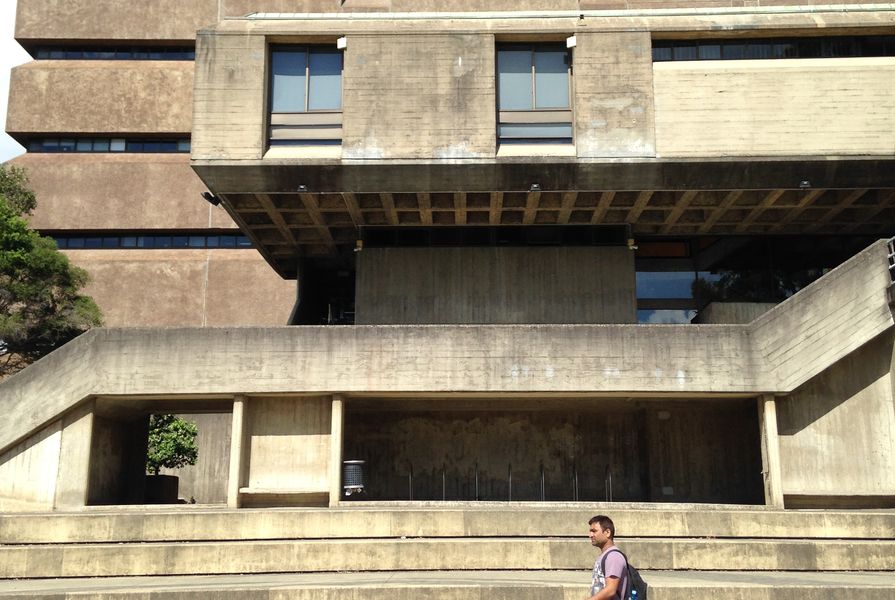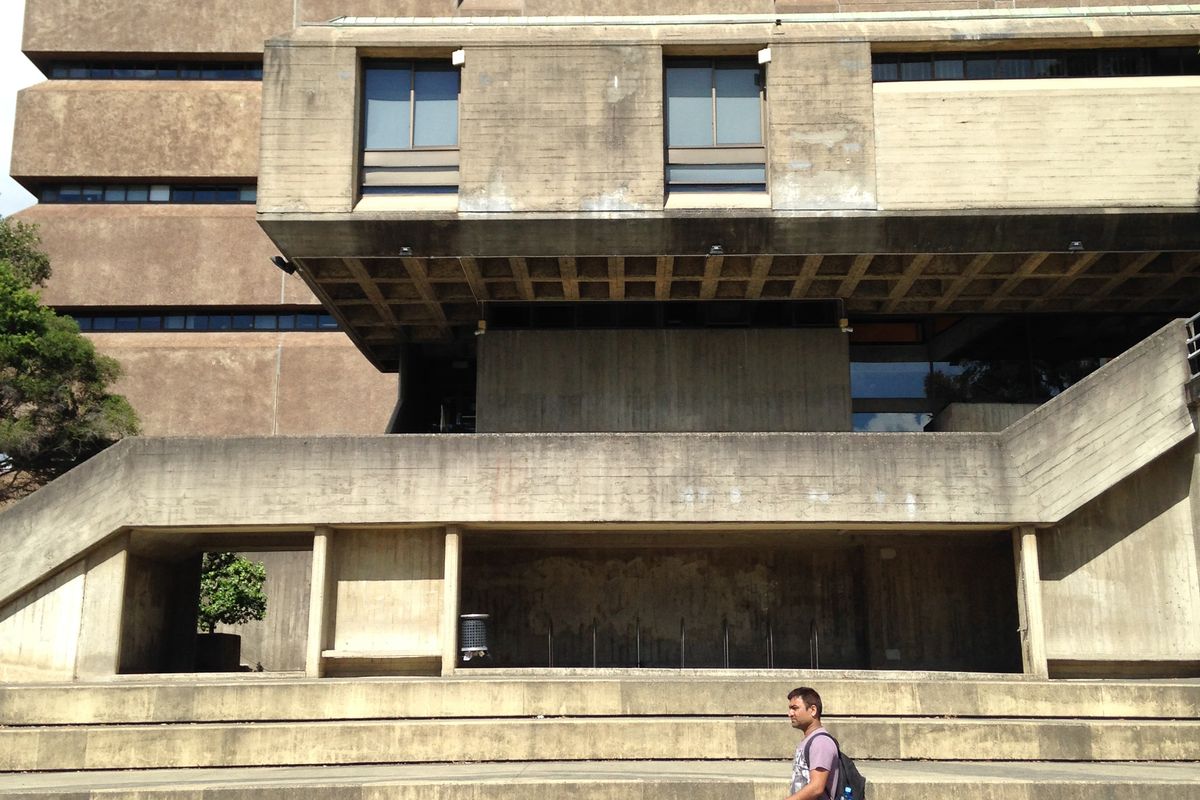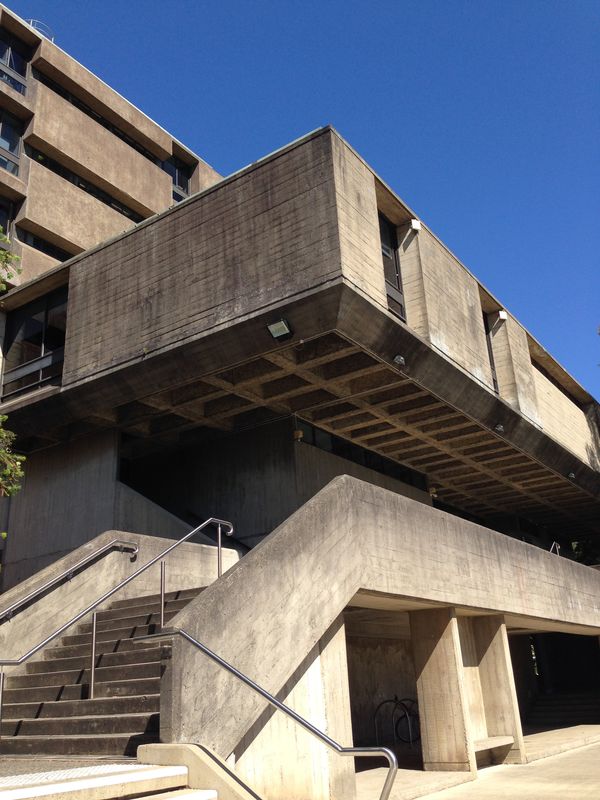The NSW branch of the National Trust has added the University of Sydney’s School of Molecular Bioscience to its heritage register.
The brutalist-style education building, also known as G08, was designed by Sydney practice Stafford Moor and Farrington Architects in 1970–73.
The National Trust acknowledged the architectural, historic and “monumental streetscape” significance of the building, describing it as a “fine example of the brutalist-style work of noted architectural firm Stafford Moor and Farrington, [which] twice won the Sulman Medal for [its] buildings.
“It is a style becoming rare due to numerous demolitions in recent years. It featured architectural devices which date back to the work of Le Corbusier in the late 1920s.”
The statement goes on to recognize that the building was home to one of the first and largest university schools in Australia devoted to research and teaching in the fields of microbiology, biochemistry, molecular biology and genetics, cell biology and human nutrition.
The building used precast concrete technology for structural and cladding elements. A cantilevered projection on its eastern facade is cast in off-form concrete, providing a stark contrast to the monolithic precast panels used elsewhere on the building.

School of Molecular Bioscience (G08) at the University of Sydney, designed by Stafford Moor and Farrington in 1970–73.
Image: Glenn Harper
Glenn Harper, a senior associate at PTW Architects in Sydney and recipient of the 2015 Byera Hadley Travelling Scholarship for The Sydney Brutalist Project, said the building was “an important and unique Sydney Brutalist building – especially in the innovative use of precast concrete technology for structural and cladding elements.”
Harper continued: “Differences in concrete texture was an important aesthetic of Sydney Brutalism. With a concept that included integration with an elevated pedestrian walkway, the project also demonstrates Sydney Brutalism’s urban pursuit: that is, these buildings were not necessarily standalone ‘set pieces’ but were to be part of a complex urban strategy (considered by some to be a failed utopian strategy, by today’s standards).”
Stafford Moor and Farrington received the Sulman Medal from the Royal Australian Institute of Architects NSW chapter in 1947 for the Wormald Bros Factory at 208 Young Street, Waterloo and in 1954 for the Boots Pure Drug Company offices at 376 Eastern Valley Way, Roseville. Both buildings have since been demolished.
The firm also designed a number of education buildings for the University of Sydney and Macquarie University.
Graham Quint, director of advocacy at the National Trust of Australia (NSW), said the School of Molecular Bioscience was one of three brutalist buildings to have been recently listed by the National Trust. The others are the St Leonard’s Centre, designed by Kerr and Smith and completed in 1972, and the Sirius building, designed by NSW housing commission architect Tao Gofers and completed in 1979. Sirius was denied a state heritage listing by the state government in July 2016 in spite of recommendations of support from the National Trust, the Heritage Council and the Australian Institute of Architects NSW chapter.
Quint added that the Trust may approach the Heritage Council with a request to consider the School of Molecular Bioscience and the St Leonard’s Centre for state heritage listing.
The listing comes amid a significant renewal at the University of Sydney’s Camperdown and Darlington campuses. The Campus Improvement Plan began in 2014 and is scheduled to be complete by 2020. At present, dozens of buildings are pending demolition – though not the School of Molecular Bioscience.
The National Trust notes that several other brutalist buildings at the University of Sydney are facing potential demolition as part of the Campus Improvement Plan. These include Wentworth Union Building (G01), Chemical Engineering (J01) and Electrical Engineering (J03) all by Ancher Mortlock and Murray, School of Law and Wilkinson Building Addition by McConnel Smith and Johnson, and RMC Gunn Building (B19) by Priestly and Lumsdaine. The Edgeworth David Building by Stafford Moor and Farrington was demolished in 2006 to make way for the Faculty of Law, designed by FJMT and completed in 2009.
The School of Molecular Bioscience is not currently included on the Australian Institute of Architects NSW chapter’s Register of Significant Buildings.

















